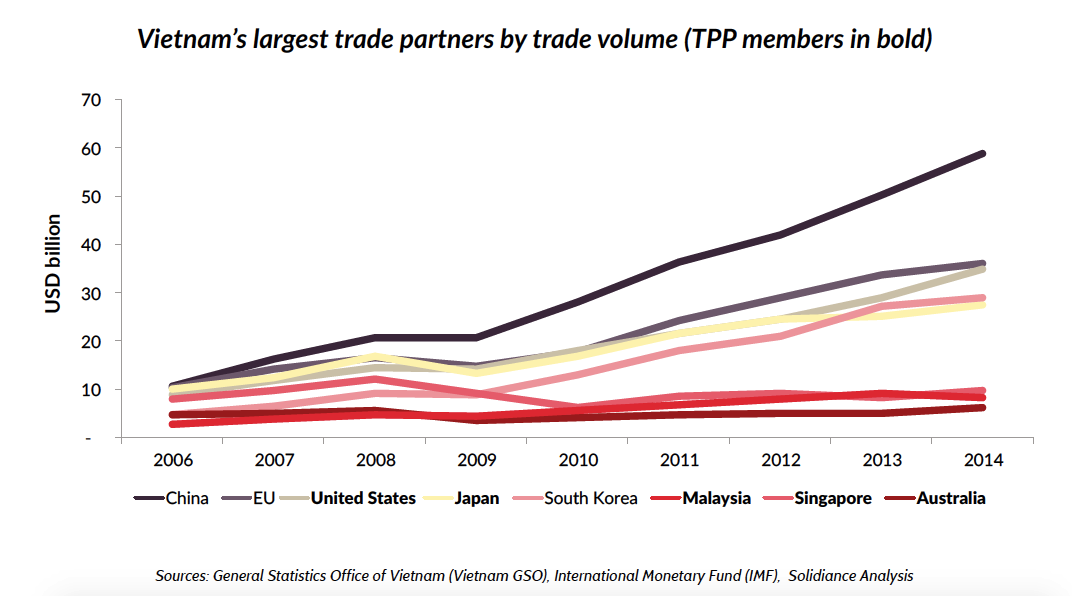Vietnam is an aggressive developing country in Southeast Asia region. The country successfully experienced a strong positive economic growth, with this year's GDP growth in Vietnam forecasted to reach 6.8%. It is the second leading country in the region, only behind the neighboring Cambodia with 7.0%. It is also worth noting that Vietnam is the only country in Southeast Asia region to exhibit an increase of export within this year's second quarter, while others simply face export slowdown.
The growth of momentum is predicted to continue in the coming years, supported by sustained domestic demand, plenty foreign direct investments, as well as export-oriented manufacturing. Vietnam's current economic reform by the government has managed to boost private investment towards the country and also improve the domestic business environment.
Although high agricultural output and steady services contribute to Vietnam's GDP growth in the last quarter, foreign direct investments as well as manufacturing industry remain the main drivers of its economic growth. Within the first two months of 2019, foreign direct investments have increased significantly to around USD 2.6 billion. Even though these investments contribute much, manufacturing still received the most attention from both regional and global investors.
Manufacturing plays a big role in Vietnam's economy by not only fulfilling domestic demand but also some global demand. Vietnam has established itself as the manufacturing export-oriented economy. Through its constant and intense export activities, Vietnam's trade volume has doubled the size of its own GDP. Therefore, Vietnam is also one of the most export-dependant economies in the region.
Vietnam's success story in manufacturing exports has to do with the government past initiatives to establish trade agreements with other nations. Vietnam has signed more than a dozen free trade agreements to reduce and cut tariffs on imports and exports. The most notable free trade pacts being the ASEAN Free Trade Agreement (AFTA), which seeks to develop multilateral economic relations within Southeast Asia region. Vietnam also looks to integrate with other global trade partners outside ASEAN through the upcoming Comprehensive and Progressive Agreement for Trans-Pacific Partnership (CPTPP) and Vietnam - EU (EVFTA).
Our paper, Benefits for Vietnam's Manufacturing Under a TPP-like Agreement, suggested that there are key benefits that can be experienced by Vietnam as they pursue to hold agreement with many global trade partners across the globe. First of all, trade partnerships will help every importer and exporter to evade tariff rates cut, which will reduce the profitability of their import and export activities. It will also help to boost large trade volumes with the trade partners such as Japan, China, and European Union countries. The next benefit would be that the growth in Vietnam's manufacturing sector will lead to an increase in production scale and industrial deepening, leading to higher productivity of the nation's labor.
However, it is worth to note that arranging trade partnership is not enough for Vietnam. The government needs to also set strategic development of supporting industries, such as raw materials industry and machinery industry, which can boost the manufacturing industry productivity and profitability. The government also needs to address the issue of infrastructure in Vietnam, as infrastructure will help the efficiency of manufacturing in the country.
Download White Paper

